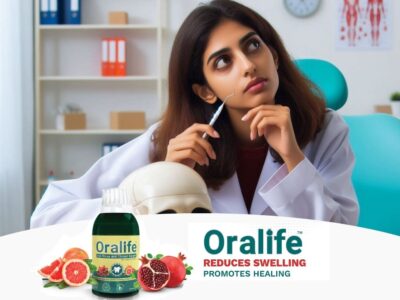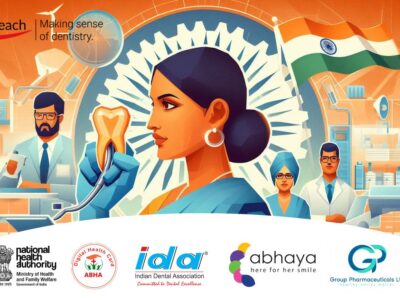What is clinical documentation?
Clinical documentation is a methodology adopted by many dental practitioners to preserve and document a clinical case of interest for future reference in the absence of the patient or practitioner. It can be done because of self-interest or it may be a mandatory part of dental journals or studies.
Clinical documentation not only helps a dentist to grow, based on his references of previous cases but also advises a regulatory approach towards his treatment modalities and urges him to investigate new and better mediums of improvement in the existing treatment. It serves from a research perspective for a lot of practitioners, helping them to grow individually. Apart from this, clinical documentation also help in business growth and act as a good promotional strategy for both beginners and matured dental hospitals, aspiring to accelerate their growth.
Clinical documentation is achieved through –
Digital ways –
- Precise photography
- Videography.
Non-digital ways –securing and preserving –
- Dental casts
- Radiographs and
- Specimens of the examined case.
The main goals of clinical documentation include:
- Preservation
- Passive Assessment
- Protection medico-legally
- Peer reference & health education and
- Public health Epidemiological studies.
Goal 1: Preservation of the case.
The essentiality of preservation of a case can be due to personal interest or patient’s interest. Special knowledge comes only on observation and examination of certain rare and peculiar cases. Often specimens of head and neck tumours are collected and documented in order to aid in further research and detailed examination of the cases. This goal is more adopted by pathologists and surgeons to preserve certain classic, rare and differential cases so as to have a future use in significant research and discovering advanced treatment modalities for the same.
Preservation of a specimen and clinical diagnostic symptoms not only helps a dentist in tracking his treatment but aids in a satisfactory explanation of the treatment to the patient based on the gradual outcome. Slow healing and multiple sitting treatments sometimes changes the perception and co-operation of the patients. They may claim no significant change in illness and in such cases, stage wise clinical documentation helps in assessment and clarification of the progress.
Goal 2: Passive assessment of the case.
Often prosthodontists, orthodontists and pathologists work with certain treatment modalities which require frequent observations. The documentation of clinical cases not only help them to predict the outcome but also remain available in the absence of the patients. This is done through preservation of casts in certain time intervals.
The documentation is also done to fabricate the appliances passively or adjust the appliances without a significant trauma and irritation to the patient. Another purpose it serves is working on modification of the treatment plans in due course of the treatment.
Goal 3: Protecting from a Medico-Legal Angle.
The third goal for documenting clinical cases is to present it as a potential key in evidence-based dentistry. The cases of child abuse, unintentional trauma, treatments done in patient interest sometimes raises questions on the ethical background and judicial enforcements of the profession. In such cases, the clinical documentation supports the treatment given and helps in determining the court of law in judgements. A clinical documentation is always advised in child abuse cases and suspected harassment cases with alveolar trauma and fractures to present as an evidence in the judicial peripheries.
In the recent world where the patient has developed both economically and intellectually, it is wiser for a practioners to harbour the practise of clinical documentation in his practise.
Goal 4: Peer Reference and Health Education.
Health education is an important aspect for every dentist. As a doctor, it is not our sole duty to treat the patient but also to teach the patient and by extension, the society. Clinical documentation gives a shape and form to our work and helps in the promotion and presentation of the same before the society. Many a times the referred word about a particular treatment becomes the centre of demands whereas the new advanced but relatively uncommon treatments do not impress the patients without any review. In such cases visual references through clinical documentations helps in promoting & convincing them. This not only urges the patient to try something new but also gives birth to new ideas in society. Pedodontists successfully use this method to win the confidence of young patients.
Clinical documentation also helps in peer reference where a case can be discussed with more than one doctor without even disclosing the identity of the patient. The advantage is the opinion of any doctor on this case would be based on differential views and not on conflict of interest. Clinical documentation of peculiar cases becomes a learning hub for upcoming dentists and juvenile practitioners.
Goal 5: Public Health Epidemiological Studies.
In the subject of public health dentistry, it has been observed that the dentists and practitioners who need to have comparitive and longitudinal studies often get disappointed with attrition of their subjects but a clinical documentation always helps in analysing the data even if the subject is not around.
In this way clinical documentations always help in testimonial survey statistics and support the survey, findings, observations, and in certain cases act as a fixed control. In certain studies of epidemiology there is a demand of a standard, which sometimes is provided by the clinical documentation for matching of accuracy.
Conclusion
The necessity of clinical documentation can not be subjected to debate. Clinical documentation not only help a practitioner grow in his field individually but also help in maintain a developing and securing environment as the curator of the facts. In the case of forensics, documentation supports the theoretical assumptions and gives them a shape of actual investigation rather than the basis of factual investigation. It not only acts a control to the future treatments but can be used widely in terms of mass media promotion and social learning. Step wise documentation always forms a basis of passive observational learning and helps in a smooth finish of the treatment.

















Comments